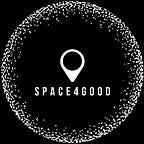Flood Security from Space
Flood monitoring using radar remote sensing
Based on the Emergency Events Database (EM-DAT), floods are the most frequent natural disasters. While there are many negative socio-economic impacts of floods such as; loss of properties and livelihoods, mass migration and hindering economic growth and development, and even loss of life. In the last decade, floods affected more than 2 billion people worldwide. In this context, remote sensing represents a valuable source of data and observations for detecting, characterizing, and monitoring floods that can overcome the shortcomings of traditional ground-based surveys and gauging stations, especially in remote areas and developing countries. Radar remote sensing data, specifically, are applicable for flood monitoring and detection as they are independent of weather conditions and daylight situations.
In April 2020, Space4good was approached by Iv infra to investigate if it is possible to detect flooded urban areas in Noordwijk city, the Netherlands. They had flood reports gathered from tweets about the Noordwijk city happening in different years. They were interested to explore whether satellite data are capable of indicating flood extent in the city. As the provided flood reports were mainly before 2014, we went through the meteorological data. Precipitation of 20.6 mm was recorded on October 6th, 2019 in Noordwijk. We investigated whether flooding happened on this date or not.
To explore possible flooding in the area, we used two Sentinel 1 images before and after the event. For this project, we had used a multi-temporal change detection method. This means by comparing two images from two different times, we can find changes. In this case, the reason could be due to flooding. In radar images, pixels containing water have the lowest backscatter, which is when the target transmits a small portion of the sending radar signal In other words, if the pixel’s DN number reduces after the flooding event, we consider this pixel as a possible inundated pixel (area). Therefore, if a pixel’s backscatter decreases after the event the reason can be flooding. In the following, you can see the results.
The red colour pixels represent possible flooded areas. They might be agricultural lands as well, which were not cultivated by that time (bare soil areas). Since there are different reasons for decreasing the pixel value, the results need to be validated. For validation, we need field data to assess the accuracy of the results. In this case, unfortunately, we did not have access to field or ground truth data. Following social media and news, there was no evidence of flooding happening in Noordwijk city. Therefore, from these results, we can conclude no flooding happened on the 6th of October 2019, only in some small locations recognized as possible inundated areas.
Multi-temporal change detection is not the only method for detecting and mapping floods. The other well-known approach is thresholding. Using the thresholding method, a backscatter value is considered as an indicator for flooded areas where all backscatter values below this threshold will be classified as flooded areas. In the following image, you can see the result of the thresholding method that Space4good has generated for Casablanca, Morocco in January 2021.
Yellow coloured polygons are possible flooded areas and the map is generated a few days after high precipitation reports. This was further validated with people on the ground to confirm the detections as indeed being correct. This goes to show that insights such as these can enable enhanced decision making with past and potential flooding in mind for people, planners and policy-makers.
Would you like more information or are you interested in collaborating with Space4Good? Visit our website or contact us via hello@space4good.com.
